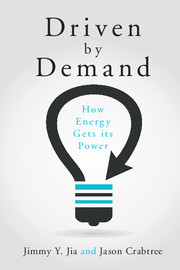Book contents
- Frontmatter
- Dedication
- contents
- List of figures
- List of tables
- Acknowledgments
- Part I Introduction
- Part II Three frameworks
- Part III Critical decisions
- Part IV Energy futurism
- 10 Towards better management of energy infrastructures
- 11 Risk management in energy
- 12 Resilience as a core value
- 13 Exploring energy security
- 14 Energy-as-a-service
- Part V Societal advancement
- References
- Index
13 - Exploring energy security
from Part IV - Energy futurism
Published online by Cambridge University Press: 05 June 2015
- Frontmatter
- Dedication
- contents
- List of figures
- List of tables
- Acknowledgments
- Part I Introduction
- Part II Three frameworks
- Part III Critical decisions
- Part IV Energy futurism
- 10 Towards better management of energy infrastructures
- 11 Risk management in energy
- 12 Resilience as a core value
- 13 Exploring energy security
- 14 Energy-as-a-service
- Part V Societal advancement
- References
- Index
Summary
To maintain energy security, one needs a supply system that provides a buffer against shocks. It needs large, flexible markets. And it's important to acknowledge the fact that the entire energy supply chain needs to be protected.
Daniel Yergin (Spiegel, 2006)In 1973, Arab states retaliated against US weapons shipments to Israel with an oil embargo—slowing or stopping the 8.4 million barrels per day (bpd) imported mostly from Middle Eastern nations. At the time, President Richard Nixon thanked Americans for voluntarily observing “gasless Sundays,” announced that directed federal energy consumption cuts had exceeded 20% by January 19, 1974, prepared to ration gasoline and unveiled Project Independence. During the same address to the nation, he stated: “We must never again be caught in a foreign-made crisis where the United States is dependent on any other country, friendly or unfriendly, for the energy we need to produce our jobs, to heat our homes, to furnish our transportation for wherever we want to go” (Nixon, 1974). Energy independence has been touted ever since, the dates continuing to slip into the future and long passing Nixon's goal of no foreign oil dependence by 1980. President Jimmy Carter even went as far as to make energy independence the central issue of his administration, calling for the “moral equivalent of war” on energy (Carter, 1977).
Carter also established the Department of Energy in 1977, signing the Department of Energy Organization Act on August 4. He even made the contentious political decision to install solar panels on the White House in 1977, an act next repeated by President Barack Obama in 2010. The fixation over energy independence continued, with Presidents Ronald Reagan, George H. W. Bush, Bill Clinton, George W. Bush, and Barack Obama all failing to achieve Nixon's goal despite sustained emphasis as a national priority.
- Type
- Chapter
- Information
- Driven by DemandHow Energy Gets its Power, pp. 258 - 283Publisher: Cambridge University PressPrint publication year: 2015

